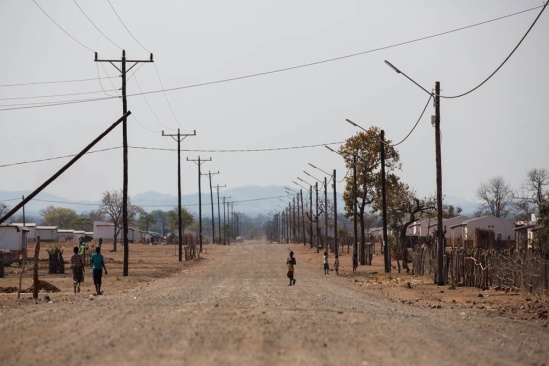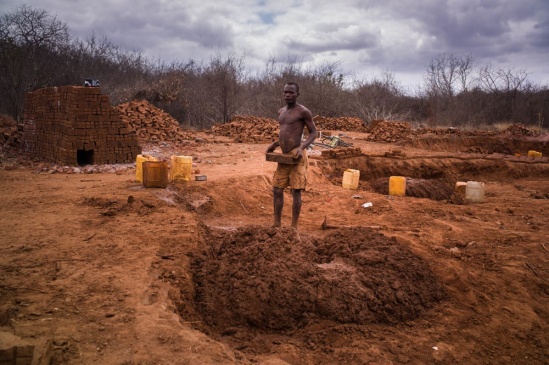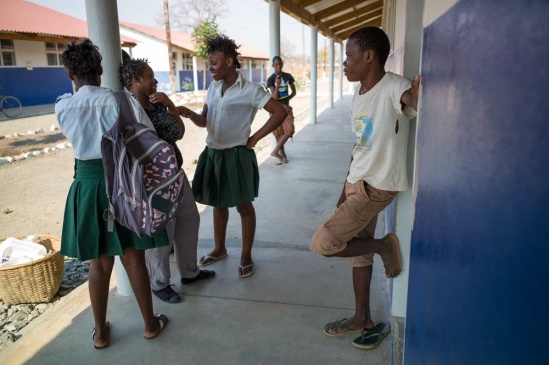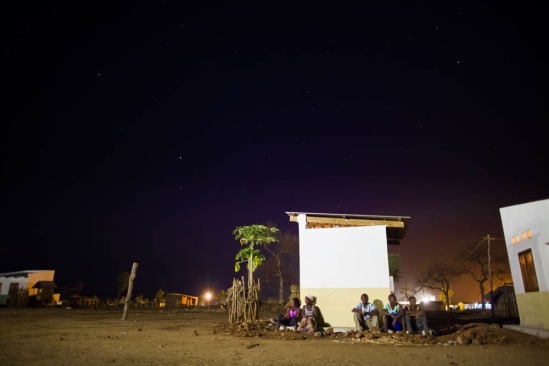The ‘Promised Land’
in Mozambique
January 16, 2013By

Sadira Joaquim works on her family’s farmland. Instead of the initially promised two hectares of productive farmland, families were given only one hectare of unproductive farmland—hardly enough to support a family, let alone sell produce on the far away markets. Sadira is only 20 years old and has no other possibilities to work, unlike in Moatize.
Promised Land is the title of the German photographer Gregor Zielke’s feature about the relocation of 700 families in Mozambique’s Tete province to make space for the Brazilian company Vale’s construction of the Southern Hemisphere’s second largest coalmine. The New York Times recently covered the plight of the people in Cateme following relocation. Gregor Zielke’s photos capture the company’s broken promises—unproductive farmland and poorly constructed settlements—but also the communities’ resilience. Gregor Zielke is part of a cooperative of photographers that have been working in Mozambique for some time and seek to advance dialogue and better understanding between Germany and Mozambique by producing media reports and developing educational projects.
Why did you call your photo feature “Promised Land”?
“Promised Land” refers to the fact that people lose their land, the land they had inhabited for generations, to a company which promised better living conditions and farmland for self-sustainment through resettlement—and the people there are very tied to their land. But looking at the conditions now you recognize that it is a promise that has not been fulfilled. For example, people were promised two hectares of productive farmland but only received one hectare of unproductive farmland hours away from their houses, which isn’t even enough to feed their own families. Houses are built cheaply and show cracks after only one or two years. Of course, at first glance they seem better than mud huts, but they’re just not suited for the area and the families. The communities’ infrastructure is completely gone, at least so far away that they simply cannot afford going there on a regular basis. The land is unbelievably hot and dry, even for Tete Province where life has always been hard anyways. Obviously, “Promised Land” also plays with the biblical term and how much of an odyssey the whole resettlement process is that people go through.

This is a typical street in Cateme, wide and dusty. Walks to the wells are far, especially when carrying 20 liters of water. The whole area is more or less deserted, ground water has to be pumped by electrical pumps because it’s so deep, so when the electricity goes down there is also no water.
What sparked your interest in Mozambique, and in Cateme in particular?
I think that Mozambique is a good example of how the local population doesn’t benefit from the current resource boom in Africa, similar things are happening in many other countries too. Kind of like the return of the colonial era. I think it’s an important issue to talk about and raise international awareness, on the other hand it’s just as important to inform the displaced communities about their rights and raise resistance so that there at least can be better consultation with the local communities in the future. You can’t really blame the government for exploring the resources; but they should be used to generate sustainable development on a local and national level. That’s just not happening. Living conditions worsened.
How did you prepare for the trip?
I worked with the Mozambican NGO Justiça Ambiental/Friends of the Earth Mozambique (JA!) that made it possible to work in the resettlement. They have very good contacts and work in the region in the field of human rights and environmental issues. Without them, the work simply wouldn’t have been possible. There’s a lot of red tape, and getting permission from the local administration and local leaders to work in Cateme was uncertain until the last minute. In fact, we spent quite a bit of time of the two weeks we were there getting permission before we could even start working in the area. JA! also opened the doors to the families in Cateme; of course there is a lot of distrust and also fear. The families in Cateme needed to understand what we were about to do, what side we were on. They were suspicious of what we were going to report from Cateme, afraid we could make it look beneficial for the people, favorable for Vale and the government. Some even thought that we had been hired by Vale. But after initial concern they were very giving and open.

This man works in a brick manufacture near Moatize. Along with his colleagues, he was resettled to Cateme and went back to Moatize because otherwise he is simply unable to support his family. They stay in the mud pit five days a week and only return to their families on the weekends because their workplace now is 40 kilometers from their homes. They sleep in the mud pit or by the ovens. They have no choice. This illustrates quite clearly how little care is being taken in the whole resettlement process.
What did you plan on capturing with your photos?
My aim was to document people’s struggle in daily life and how they deal with these difficult circumstances—I was amazed at how people still make the best of their situation and try to cope with it. The problems these communities face are on so many different levels and not always very obvious—they’re basically sent to the desert without adequate housing, health care and—most importantly—no possibilities for self-sustainment. Most of them are farmers, they live off their land and sell their produce on the markets, now the markets are more than 40 kilometers away and people don’t have any surplus produce to sell due to the unproductive farmland they were given. They depend on their land. That really robs them of their existence.
What impressed you most about how the people dealt with their worsened living conditions?
The most amazing moment for me was to see people dancing on a Sunday afternoon a few kilometers from Cateme in Mwaladzi, a community resettled by the British mining company Rio Tinto. There is no electricity and no water supply and people have to rely on a water truck that comes once a week. Two boys had put up some kind of karaoke machine blasting music, powered by a solar panel they got somewhere. Adults and children alike were dancing and enjoying themselves inviting me to join them.

Students hang around after school at Armando Guebuza School in Cateme. The school is a so-called “white elephant”: theoretically it brings education and infrastructure to the resettlement, but in reality not many families can afford the high school and examination turning the school into a de facto boarding school for students from other communities. Only approximately 10 percent of students come from Cateme resettlement.
How do you aspire to influence political debates with your work?
My aim is simply to put faces to the displaced communities, to show that the big companies are not moving around figures and a nameless “population.” They have names, they are mothers, fathers, grandparents and kids, all they want is to raise their families. That’s not asking much, is it?
You also conducted a project on the urbanization process of villages in eastern China. Do you see any parallels between the transformation processes in Mozambique and those you observed in eastern China?
The process of resettlement in China is very different to Mozambique, the reasons and circumstances are very different. However, any kind of imposed resettlement usually means a drastic change in the living conditions. In China as well as in Mozambique people have to adapt to the changes and eventually find new ways of self-sustainment. You see many people in China’s rapidly growing cities still fishing in rivers and canals and using other natural resources they find by the roadside, mostly because they just do the things they’re used to and might have difficulties adapting to a new lifestyle. In Mozambique such things may even be a matter of survival.

The Joaquim family enjoys a little cooling down after sunset. Houses are not built to people’s needs and are of poor quality. The tin clad roofs heat up the houses to temperatures of over 60°C inside and show cracks after only one or two years. Though the area is very dry, occasional rains leak in the houses, leaving inhabitants to seek shelter in the school.
* All photo captions written by the photographer.